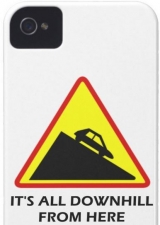
With the realisation that smartphone penetration has exceeded the world’s population – market saturation - IDC has reduced its 2016 smartphone growth estimates from woeful to poor and pitiful.
Smartphone growth in 2015 was up by 10.5% over 2014. In March it predicted a 5.7% growth in FY 2016. In June it revised that to 3.1%, and now in September the new estimate is 1.6%.
International Data Corporation is usually pretty accurate, and it has every right to change estimates so what is driving this “glass half empty” pessimism?
Jitesh Ubrani, senior research analyst with IDC's Worldwide Quarterly Mobile Device Trackers, said, "Growth in the smartphone market is quickly becoming reliant on replacing existing handsets rather than seeking new users. From a technological standpoint, smartphone innovation seems to be in a lull as consumers are becoming increasingly comfortable with 'good enough' smartphones.”
{loadposition ray}
Then there is the overwhelming preference for larger screens – as smartphones are replaced buyers are opting for 5.5” or larger. VR will help drive that replacement market. But phablets are where the Chinese makers excel. Lots of real estate for a much lower price.
Anthony Scarsella, IDC research manager, Mobile Phones, said, "As phablets gain in popularity, we expect to see a myriad of vendors further expanding their portfolio of large-screened devices but at more affordable price points compared to market leaders Samsung and Apple. Over the past two years, high-priced flagship phablets from the likes of Apple, Samsung, and LG have set the bar for power, performance, and design within the phablet category."
"Looking ahead, we anticipate many new “flagship type” phablets to hit the market from both aspiring and traditional vendors that deliver similar features at considerably lower prices in both developed and emerging markets. Average selling prices (ASPs) for phablets are expected to reach $304 by 2020, down 27% from $419 in 2015, while regular smartphones (5.4 inches and smaller) are expected to drop only 12% ($264 from $232) during the same time frame," he added.
On the positive side is the emergence of trade-in/buy-back programs from top vendors and Telcos, but it is still about replacement – not growing the pie via innovation like augmented and virtual reality.
In FY 2016
Android currently has an 85.3% market share and will ship 1246.2 million phones – that is up 6.7%
iOS has 13.9% and will ship 203.8 million in the same period. That is down by 12%.
IDC sees reasonable growth in Android over the next five years and minimal growth in iOS.
Android - Google's introduction of Daydream VR and Project Tango AR will help usher in new use cases and will help participating hardware vendors to offer differentiated experiences in the premium segment. The latest release of Android Nougat and Google's ongoing ambition to secure Android will help the OS secure a better footing in the commercial segment. Overall Android's ASP is set to remain flat in 2016 ($217) compared to last year and will decrease to $190 by 2020.
iOS - The rumoured removal of the headphone jack and the expectation of a significant hardware refresh in late 2017 – the tenth anniversary of the iPhone – are contributors to the first full-year decline in iPhone shipments in 2016. However, IDC does expect a rebound if the iPhone 8 is spectacular.